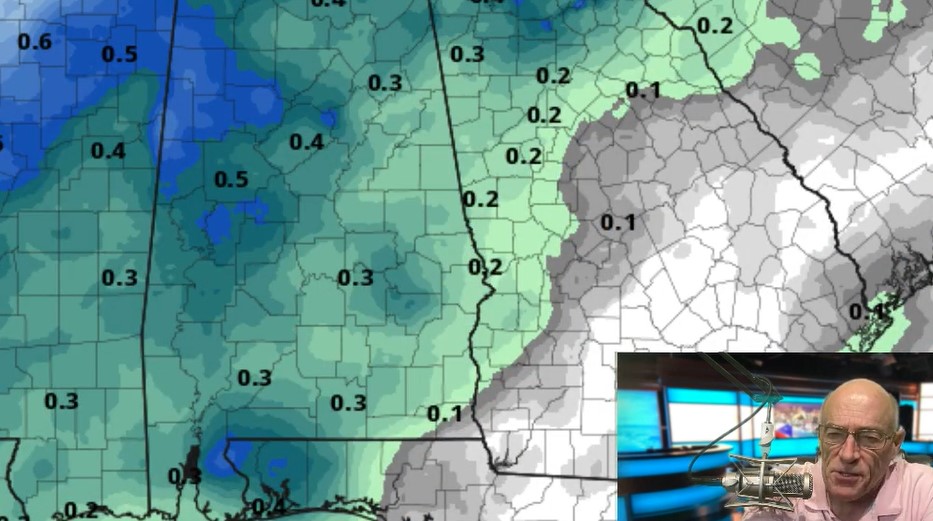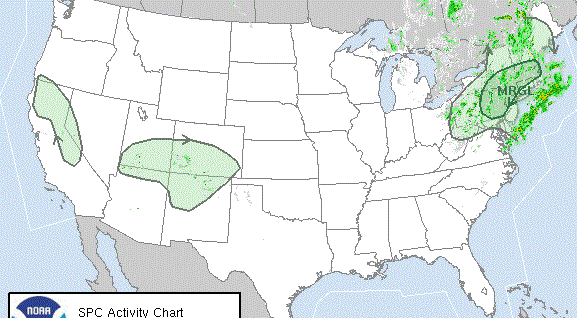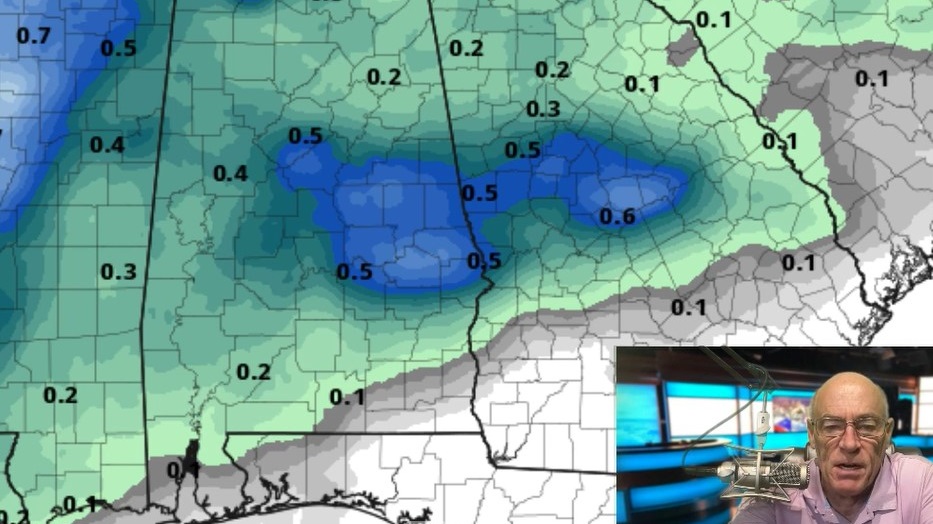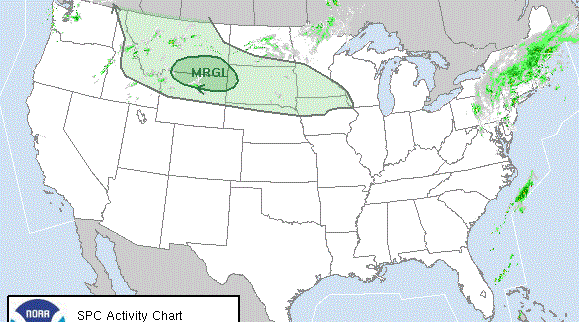James Spann: Scattered severe storms possible in Alabama through tonight
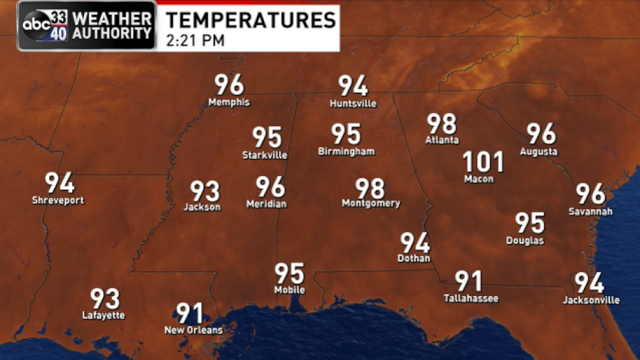
RADAR CHECK: So far, thunderstorms are a no-show across Alabama as of 3 p.m.; the sky is partly sunny and hazy with temperatures in the 90s. We still expect random, scattered storms to form over the next few hours, and where they do form strong straight-line winds are possible. The Storm Prediction Center maintains a slight risk (level 2 out of 5) of severe thunderstorms for areas south of I-59 through tonight.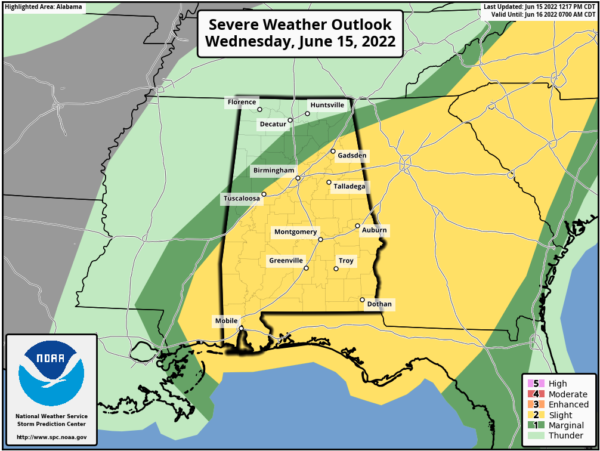 THURSDAY THROUGH THE WEEKEND: Hot weather continues. Look for highs mostly between 93 and 98 degrees Thursday and Friday with only isolated afternoon and evening thunderstorms. The chance of any one spot getting wet both days is 10-20%. A surge of dry air drops into the state Friday night, setting the stage for lower humidity and cooler nights over the weekend. Some of the cooler spots across north Alabama will dip into the 50s early Sunday morning. Look for sunshine in full supply Saturday and Sunday with highs mostly in the low 90s.
THURSDAY THROUGH THE WEEKEND: Hot weather continues. Look for highs mostly between 93 and 98 degrees Thursday and Friday with only isolated afternoon and evening thunderstorms. The chance of any one spot getting wet both days is 10-20%. A surge of dry air drops into the state Friday night, setting the stage for lower humidity and cooler nights over the weekend. Some of the cooler spots across north Alabama will dip into the 50s early Sunday morning. Look for sunshine in full supply Saturday and Sunday with highs mostly in the low 90s.
NEXT WEEK: The upper ridge stays in place and temperatures will remain above average, with highs in the 90s. Afternoon showers and storms will remain scarce most days.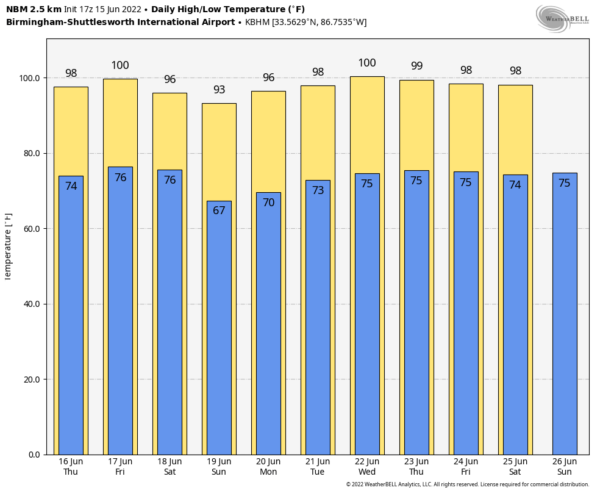 TROPICS: An area of low pressure inland over eastern Nicaragua is accompanied by a disorganized area of showers and thunderstorms. Additional development is unlikely during the next day or so while the low remains inland. The system is forecast to move slowly northwestward and could emerge over the Gulf of Honduras, where some development is possible on Friday. Some development is also possible over the southern Bay of Campeche by early next week. Regardless of development, locally heavy rainfall is possible over Nicaragua, Honduras, Belize and southeastern Mexico through the weekend.
TROPICS: An area of low pressure inland over eastern Nicaragua is accompanied by a disorganized area of showers and thunderstorms. Additional development is unlikely during the next day or so while the low remains inland. The system is forecast to move slowly northwestward and could emerge over the Gulf of Honduras, where some development is possible on Friday. Some development is also possible over the southern Bay of Campeche by early next week. Regardless of development, locally heavy rainfall is possible over Nicaragua, Honduras, Belize and southeastern Mexico through the weekend.
The National Hurricane Center now gives the system a 20% chance of development. The rest of the Atlantic basin, including the Gulf of Mexico, remains very quiet.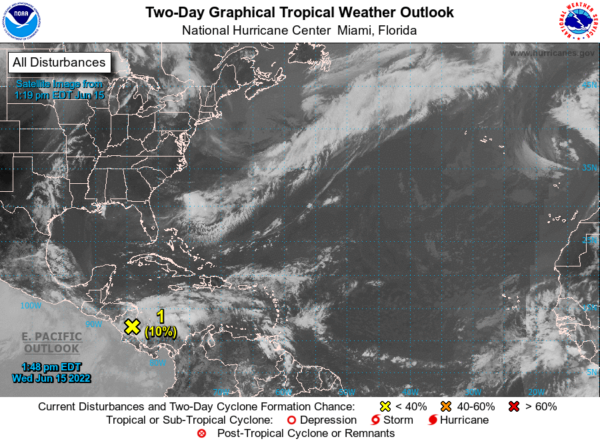 ON THIS DATE IN 1991: The second-largest volcanic eruption of the 20th century began as Mount Pinatubo injected 15 to 30 million tons of sulfur dioxide 100,000 feet into the atmosphere. As a result of the eruptions, 343 people were killed in the Philippines and 200,000 were left homeless. Material from the explosion would spread around the globe, leading to climate changes worldwide as the sun’s energy was blocked out and global temperatures cooled by as much as one degree Fahrenheit. The next year, 1992, was globally one of the coldest since the 1970s.
ON THIS DATE IN 1991: The second-largest volcanic eruption of the 20th century began as Mount Pinatubo injected 15 to 30 million tons of sulfur dioxide 100,000 feet into the atmosphere. As a result of the eruptions, 343 people were killed in the Philippines and 200,000 were left homeless. Material from the explosion would spread around the globe, leading to climate changes worldwide as the sun’s energy was blocked out and global temperatures cooled by as much as one degree Fahrenheit. The next year, 1992, was globally one of the coldest since the 1970s.
BEACH FORECAST: Click here to see the AlabamaWx Beach Forecast Center page.
WEATHER BRAINS: You can listen to our weekly show all about weather any time on your favorite podcast app. James Spann and a team of meteorologists from around the nation bring on interesting guests; it’s a great podcast for weather geeks.
For more weather news and information from James Spann and his team, visit AlabamaWx.
